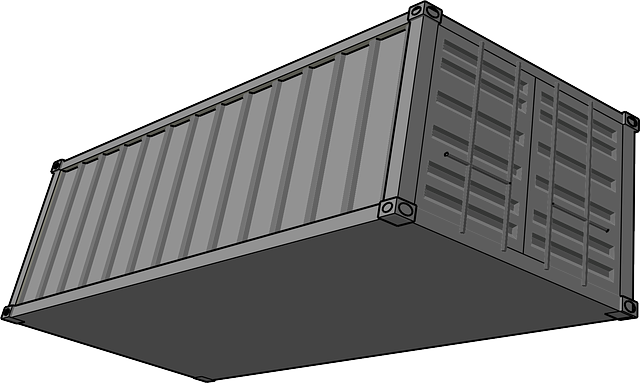Physical damage insurance is crucial for protecting against unexpected property loss, with policyholders needing to understand complex terms like "direct physical loss" and sublimits. Cost transparency empowers consumers to compare policies, avoid hidden costs, and build trust with insurers. Simplifying language, using visual aids, and personalized summaries enhance understanding and foster healthier relationships between insurers and clients. Enhanced transparency benefits both insured individuals and providers, making insurance more accessible, affordable, and reducing disputes.
In today’s complex insurance landscape, understanding your physical damage insurance policy is crucial. This article guides you through the process of prioritizing cost transparency and clarity in insurance policy terms. We explore key aspects like decoding intricate language, the significance of transparent costs, and strategies to simplify policies. By implementing these practices, both insured individuals and providers can benefit from enhanced clarity, fostering trust and better-informed decision-making in the realm of physical damage insurance.
Understanding Physical Damage Insurance: Decoding the Language

Physical damage insurance is a crucial component of any comprehensive insurance policy, offering protection against unforeseen events that can cause significant financial loss due to property damage. However, understanding the intricacies of this coverage can be challenging for many policyholders due to complex and often technical language used in insurance contracts. Decoding this language is essential to ensure you’re adequately protected and aware of limitations or exclusions.
When reviewing your policy, focus on clarifying what constitutes covered physical damage. This includes damages from events like fires, storms, accidents, or natural disasters. Pay close attention to the terms “direct physical loss” and “concurrent causes,” which help define what is eligible for compensation. Additionally, be mindful of sublimits—specific dollar amounts set for certain types of damage—as these may require additional coverage if your potential losses exceed these limits.
The Importance of Cost Transparency in Policy Terms

In the complex landscape of insurance, where policies can span hundreds of pages, cost transparency is a beacon of clarity for policyholders. Understanding every aspect of an insurance premium is crucial, especially when it comes to physical damage insurance. This type of insurance protects individuals and businesses from financial burdens stemming from property damage caused by unforeseen events like accidents, natural disasters, or malicious acts. However, navigating the intricacies of coverage, deductibles, and various fees can be daunting for many policyholders.
Cost transparency ensures that consumers are well-informed about all charges associated with their physical damage insurance. It allows them to compare different policies side by side, making it easier to choose one that aligns with their needs and budget. When policy terms are clear and transparent, policyholders can avoid unexpected surprises, such as hidden costs or excessive fees, when filing a claim. This promotes trust between insurers and insureds, fostering a healthier insurance market where consumers feel empowered to make informed decisions.
Strategies for Achieving Clarity and Simplifying Policies

Achieving clarity in insurance policy terms is a multifaceted approach that involves both simplification and innovative communication strategies. One key method is to break down complex concepts into easily digestible language, ensuring consumers can understand their coverage without legal jargon. This includes using simple definitions for technical terms related to physical damage insurance, such as deductibles, exclusions, and coverage limits, making it easier for policyholders to grasp what’s included and what’s not.
Additionally, leveraging visual aids like infographics or interactive tools can significantly enhance comprehension. Insurance companies can also offer personalized policy summaries that outline key points relevant to each customer’s unique needs, ensuring they understand their protection against potential physical damage risks. These strategies not only promote transparency but also foster trust between insurers and their clients.
Benefits of Enhanced Transparency for Insured Individuals and Providers

Enhanced transparency in insurance policy terms, particularly regarding cost and coverage, offers profound benefits for both insured individuals and providers. For policyholders, clarity in pricing and conditions empowers them to make more informed decisions about their physical damage insurance needs. They can compare options, understand potential out-of-pocket expenses accurately, and choose policies that align with their financial capabilities and risk tolerance. This level of transparency builds trust between customers and insurers.
For providers, cost transparency fosters a competitive environment where services are priced fairly based on actual costs and risks involved. This encourages innovation in pricing models and coverage options, making physical damage insurance more accessible and affordable for a wider range of individuals. Moreover, transparent policies reduce the likelihood of disputes over claims due to unexpected costs or unclear terms, ultimately leading to healthier and longer-lasting relationships between insurers and their clients.
In conclusion, prioritizing cost transparency and clarity in physical damage insurance policy terms is vital for fostering trust between insurers and insured individuals. By decoding complex language, implementing simplification strategies, and promoting enhanced transparency, both parties benefit from improved understanding and reduced ambiguity. This approach not only ensures consumers make informed decisions but also enables providers to offer tailored, effective coverage, ultimately enriching the overall insurance experience.
